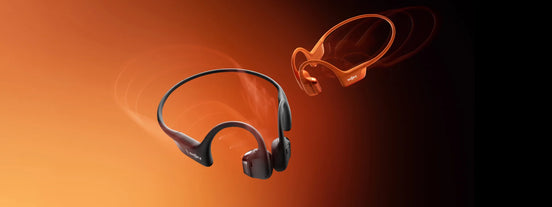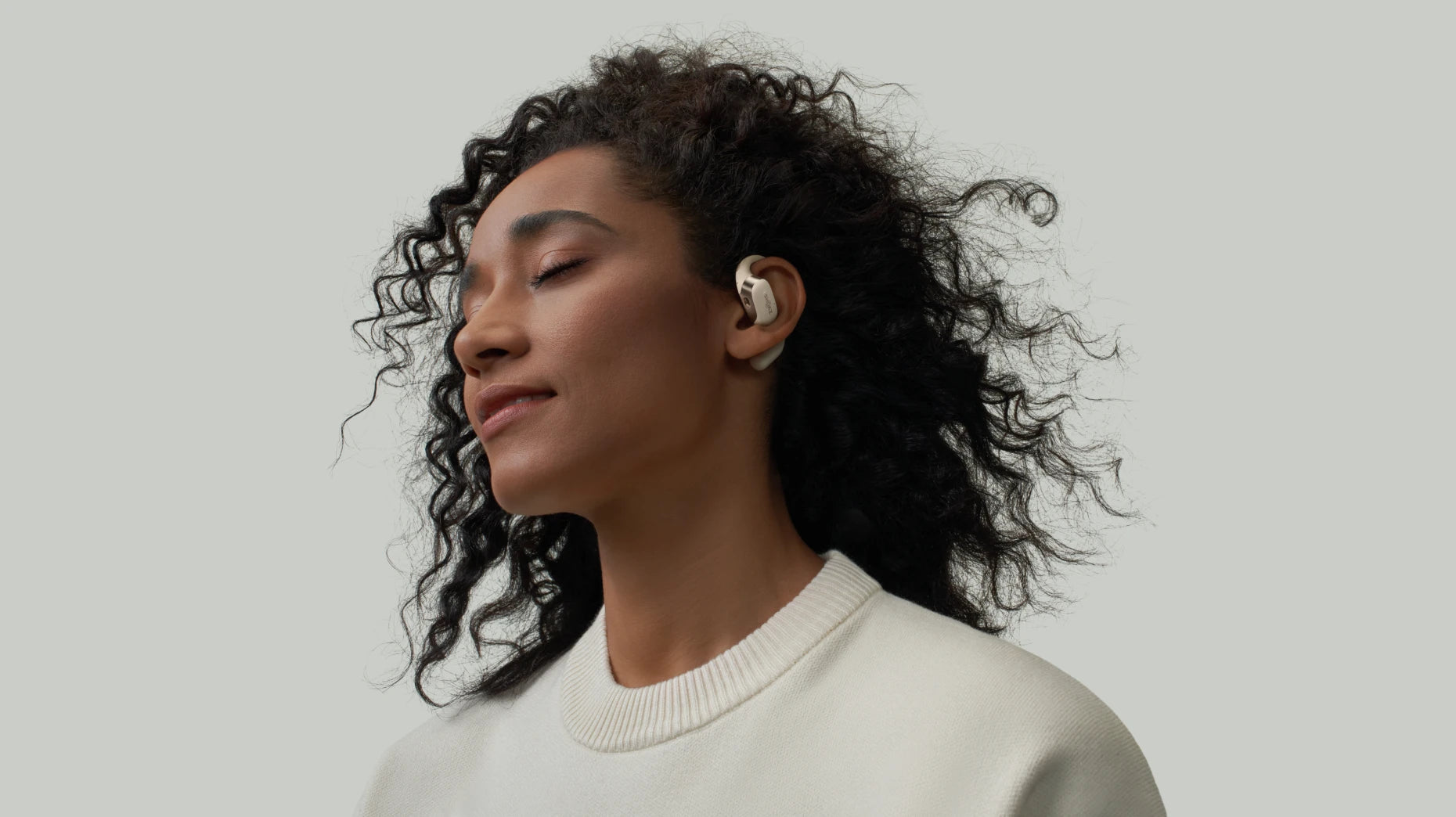Does Bone Conduction Headphones Damage Hearing: Safety Guide
With an abundance of digital content in the world, many people have turned to bone conduction headphones as a way to consume it all. But are these headphones safer than more traditional types of headphones? And can they still damage your hearing? In this article, we’ll answer both these questions and more.
Tips: This Christmas, Shokz is offering a fun holiday giveaway where you can win free headphones, Spotify cards, or exclusive coupons. A simple way to add a little joy to your season. Click now!
Win free Christmas gifts from Shokz!
How Does Bone Conduction Headphones Work?
Instead of sending sound waves through your ear canal to your eardrum, bone conduction headphones transmit vibrations through the bones of your skull, directly to your inner ear.
Bone conduction headphones use transducers that convert electrical audio signals into mechanical vibrations. Because the headphones rest on the temporal bone, they create localized vibrations that travel through the bone tissue until they reach the cochlea in the inner ear. Shokz’s bone conduction technology has a long track record of R&D and industry recognition, including over 5,000 patents aimed at enhancing sound quality while minimizing vibration and sound leakage.
Can Bone Conduction Headphones Cause Hearing Loss?
Because bone conduction headphones bypass the outer and middle ear, they don’t apply sound pressure on the eardrum. As a result, they eliminate the risk of direct eardrum damage.
In other words, bone conduction headphones avoid direct trauma to the eardrum, but they don’t eliminate the risk posed by excessive loudness. Practicing safe listening habits, like time limits and moderate volume, is essential for protecting cochlear health and preventing hearing loss as well as related ear pain from headphones.
Bone Conduction vs Traditional Headphones: Hearing Safety & Technology
|
Key Technology |
Hearing Damage Risk |
| Traditional Headphones |
Uses speakers to send sound waves via the ear canal and eardrum to the cochlea |
1. Direct pressure on the eardrum:can cause discomfort with long-term use
2. High volume (85+ dB) exposure: damages cochlear hair cells (responsible for sending sound signals to the brain) |
| Bone Conduction Headphones |
Uses transducers to send vibrations through the cheek and jaw bones directly to the cochlea, bypassing the eardrum |
1. No eardrum pressure: eliminates risk of direct eardrum damage
2. Same cochlear stimulation: prolonged high-volume use can still harm inner ear hair cells (similar to traditional headphones) |
There are a variety of factors to consider when looking for the best pair of safe bone conduction headphones, from sound quality and comfort to battery life and water resistance. You want to make sure that the audio is clear and that there isn’t distortion or excessive vibrations that can lead to discomfort. For all-day listening sessions, you want a design that’s lightweight yet stable, with a long-lasting battery. And for fitness and sports settings, you want to be sure the materials can protect against sweat and water.
One pair of headphones that checks all the boxes is the OpenRun Pro 2, the flagship open-ear bone conduction sports headphones from Shokz. Here’s a little more about it:
Premium Bone Conduction Headphones for Your Safe Listening - OpenRun Pro 2
OpenRun Pro 2 prioritizes safety through its open-ear design and ergonomic fit. Unlike traditional headphones that block out external sounds, OpenRun Pro 2 keeps you connected to your environment. This unique and practical listening experience is ideal for outdoor runners, cyclists, and other fitness enthusiasts since it delivers high-quality audio without compromising situational awareness.
Shifting headphones can also be a safety hazard; the OpenRun Pro 2 addresses this issue with a design engineered for unshakeable stability. With strategically placed ear hooks and a unibody frame, the headphones provide optimal support and stability, even during the most intense workouts.
Price: $179.95

5 Key Features of OpenRun Pro 2
Open-Ear Design: You can stay alert to your surroundings while listening to your playlist, regardless of whether you’re crossing a busy street or hiking an isolated trail.
Groundbreaking Audio: With DualPitchTM Technology, which combines bone conduction and air conduction drivers, the OpenRun Pro 2 delivers layered, crisp audio with less vibration than ever before.
Long-Lasting Battery: Thanks to a larger battery with none of the extra weight, the OpenRun Pro 2 offers up to 12 hours of battery life. Quick Charge also gives you 2.5 hours of playtime from just 5 minutes of charging.
Enhanced Comfort: The weight-optimized frame and reduced clamping force guarantee a snug fit without the uncomfortable pressure points.
IP55 Water Resistant: Whether you’re running in a drizzle or sweating it out during a workout, OpenRun Pro 2’s water-resistant design ensures durability against the elements.
FAQ of Bone Conduction Headphones on Hearing Issues
Q1. At what decibel level can bone conduction headphones cause hearing damage?
A1. The threshold for potential hearing damage from bone conduction is similar to that of traditional headphones. If you’re listening to audio for 8+ hours a day at 85 dB or higher, then the bone conduction headphones could cause hearing damage. Or, if you’re listening to audio at 100 dB or higher for 15 minutes or less, this could also cause hearing damage.
Q2. Are bone conduction headphones safer for people with hearing loss?
A2. Yes, not only are they generally safer, but they can also be more effective for individuals with conductive hearing loss. Because the sound vibrations are transmitted directly to the inner ear, bone conduction headphones avoid the affected ear structures that usually cause conductive hearing loss.
Q3. Are bone conduction headphones safe for everyday use?
A3. Yes, bone conduction headphones can be used every day. Their main benefits include minimizing direct damage to the eardrum and irritation to the ear canal. That said, listening to loud audio for prolonged periods of time can still cause hearing damage. Users should listen responsibly.
Conclusion
Bone conduction technology is generally safe and doesn’t cause any hearing damage when used at moderate volumes. Because it bypasses the ear canal, it reduces the risk of eardrum-related damage. However, prolonged exposure to high volumes can still harm the cochlea. If you’re looking for a new pair of safe bone conduction headphones, look no further than the OpenRun Pro 2. Visit the Shokz website today to learn more.








